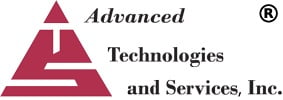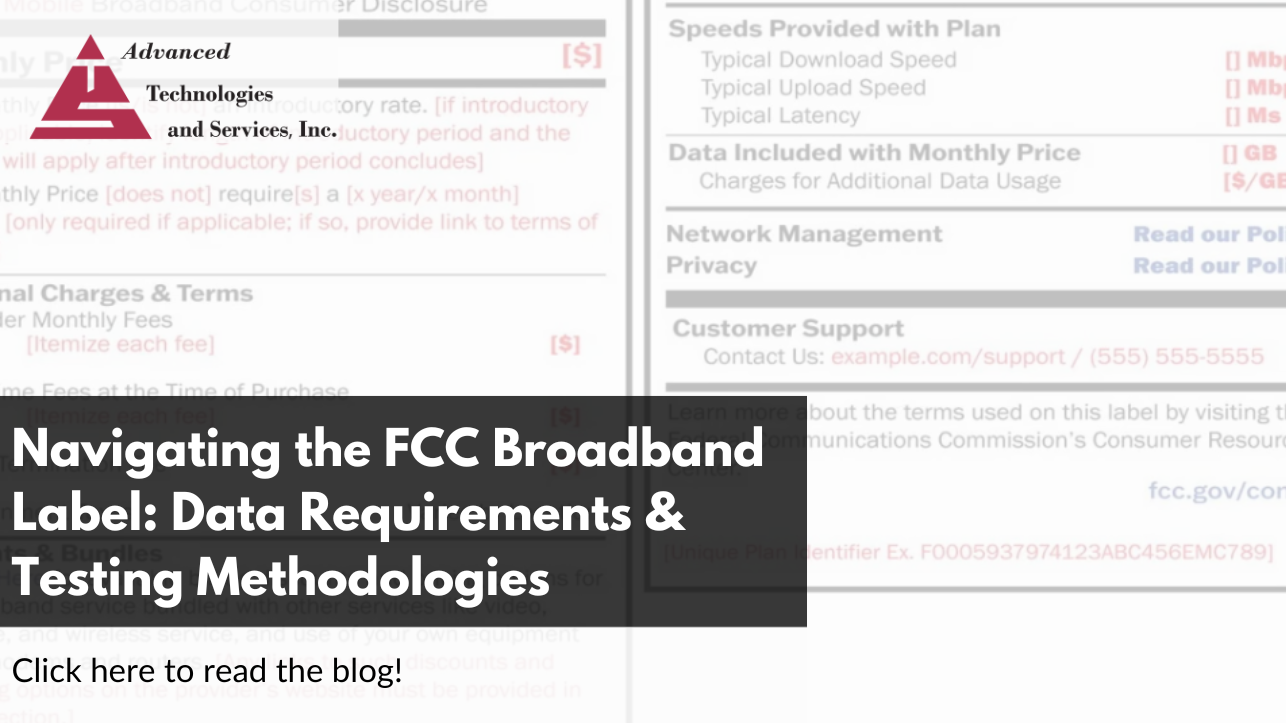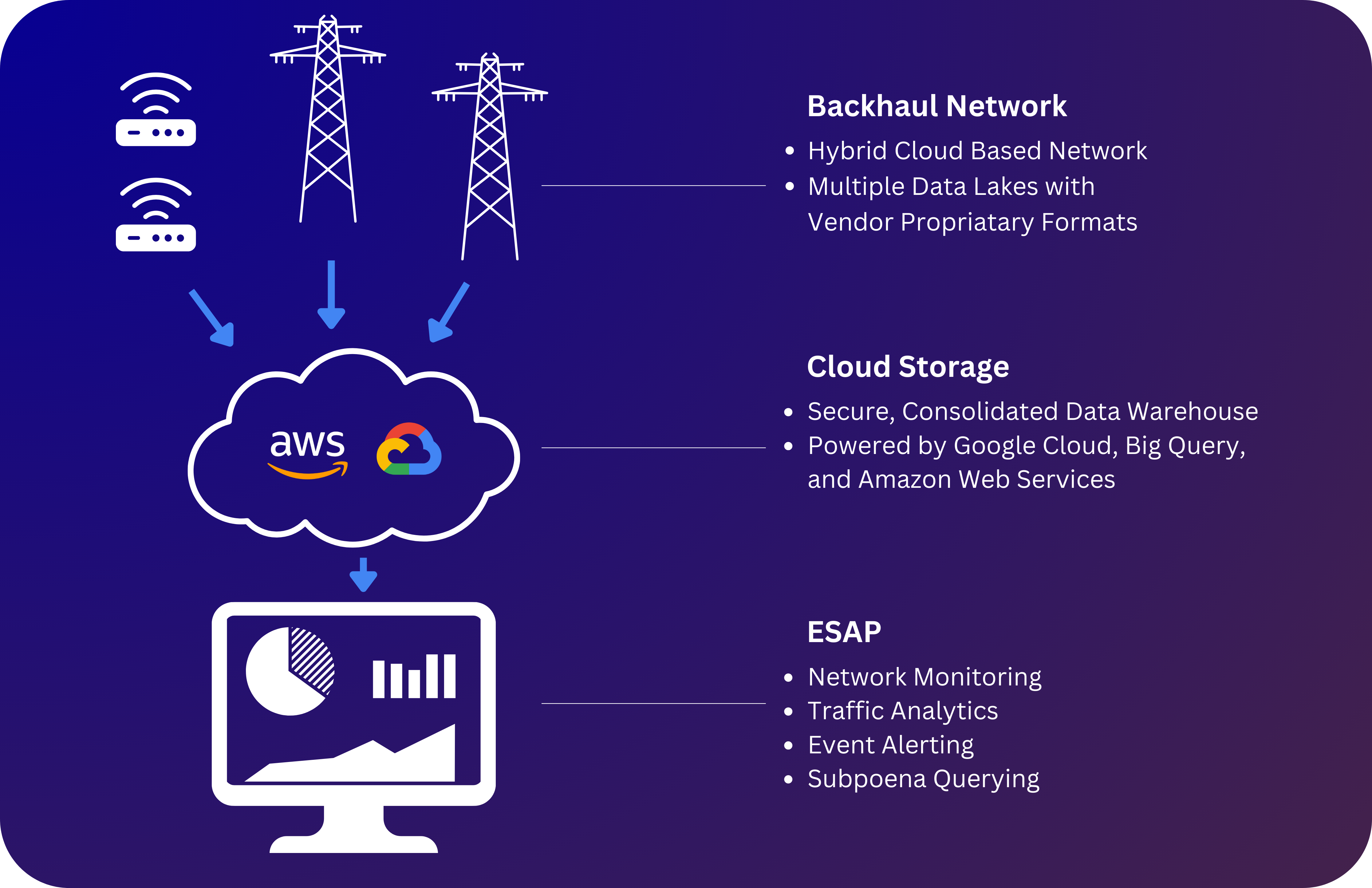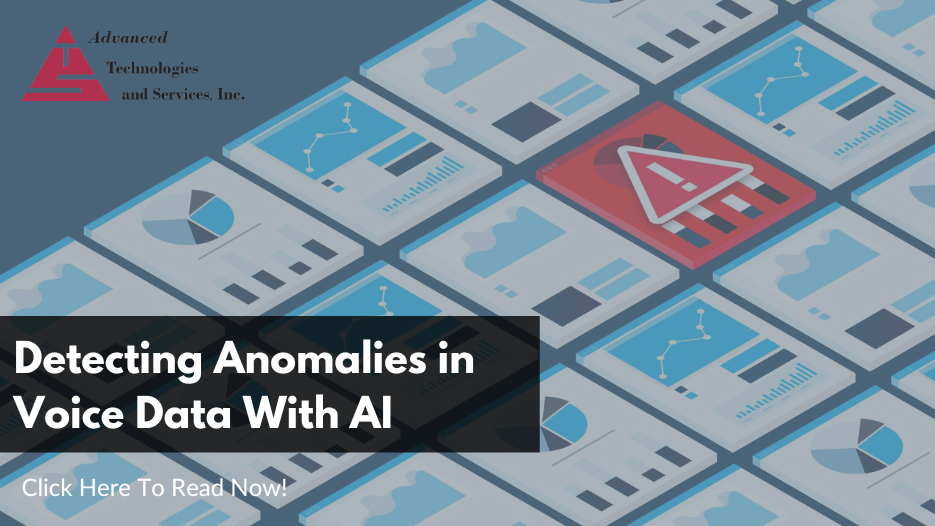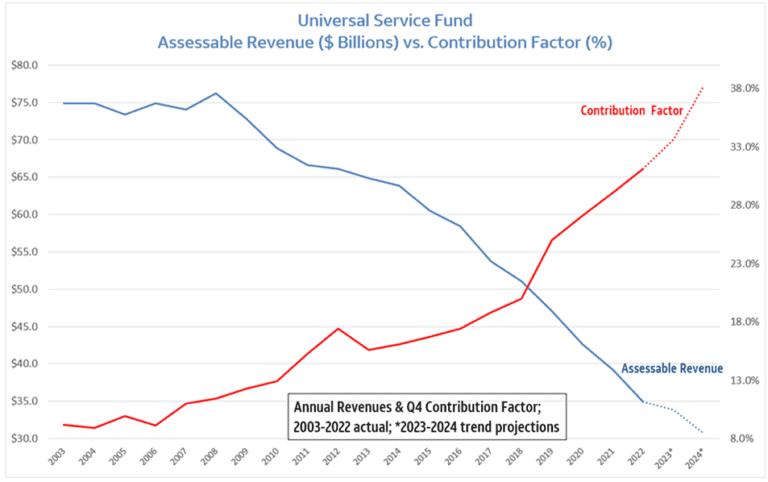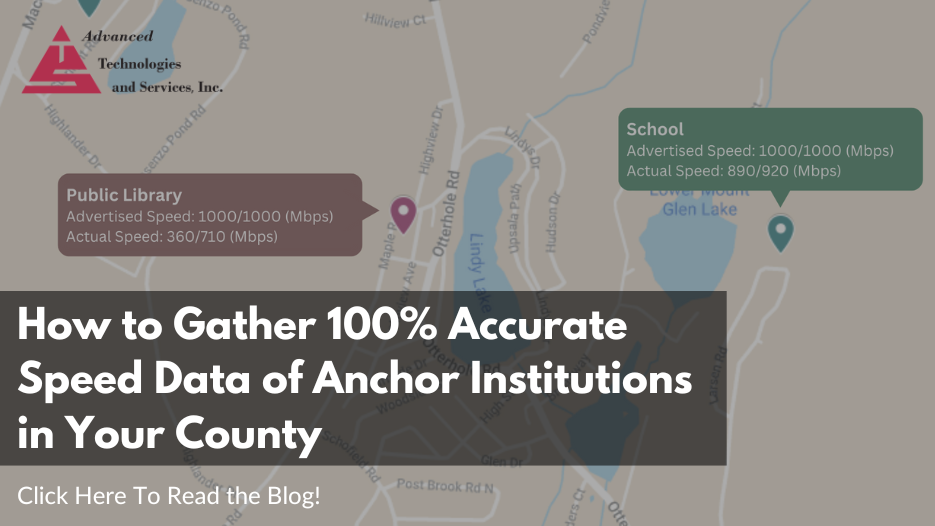The Federal Communications Commission (FCC) has announced a significant hike in the Universal Service Fund (USF) fee factor, which will rise to 34.4% for the third quarter of 2024. This marks a notable increase from previous quarters, reflecting ongoing efforts to sustain and expand the reach of essential telecommunications services across the United States.
FCC USF Fee Factor Increases to 34.4% from 32.8% for Q3 2024
Navigating the FCC Broadband Label: Data Requirements & Testing Methodologies
Broadband nutrition labels are a game changer for consumers, empowering them to make informed choices based on clear information about advertised speeds versus real-world performance.
However, for ISPs, these labels represent a significant challenge. Meeting the FCC's data requirements for accurate data hinges on reliable testing methodologies.
It doesn't help that the FCC hasn't released a clear framework for speed testing similar to what they did for CAF Performance Testing, nor how they plan to keep ISP's accountable for the speed data they submit.
Without independent, objective performance testing, ISPs risk not only running afoul of regulations but also, more importantly, eroding consumer trust – a critical factor in the increasingly competitive broadband market.
This blog will dive into the data needed for these labels, and why we think third-party testing is the best solution.
Topics: Telecom Data Analytics, Regulatory, stamper box, connect america fund, speed testing
Centralizing Data: How Telecom Providers Can Harness Multiple Data Streams
As society's dependence on telecom services intensifies, so does the surge in data volume generated by Communication Service Providers (CSPs)
Telecommunication networks often rely on a mix of backhaul vendors and technologies to ensure seamless connectivity, efficient data transfer, and robust network performance, thereby meeting the increasing demands of users. While this diversity brings benefits, it also introduces complexities in terms of monitoring, management, and issue resolution.
Adding to the complexity, the data collected by CSP's from these vendors is sometimes scattered across numerous data lakes with various technology and vendor-proprietary formats. This abundance of data provides little benefit unless providers can extract meaningful insights from the diverse network elements embedded in their backend infrastructure.
In this blog post, we'll unravel the impact a centralized data dashboard such as our Event Storage & Analytics Platform can have in reshaping how telecom providers navigate their data operations.
Topics: Big Data, ESAP, Machine Learning, Fraud Prevention, Data Plumbing
In the modern hyper-connected world, telecom networks are the backbone of the digital age, keeping us connected in our personal lives and running essential businesses and services. But disruptions like fraud, outages, or dropped calls can cause some serious headaches to both the service provider and their customers.
Traditionally, anomalies within telecom networks were only uncovered at the end of each billing cycle, if detected at all, requiring analysts to comb through seas of data. But now thanks to Machine Learning (ML), we can process and analyze huge stacks of data records to spot trends, detect suspicious outliers, and create connections that humans may have overlooked.
In this blog post, we'll explore how our Event Storage & Analytics Platform (ESAP) puts statistical analysis and machine learning to work for telecom companies, unlocking valuable insights that were previously hidden within their data.
Topics: Big Data, ESAP, Machine Learning, AI, Artificial Intelligence
USF Traffic Study vs Safe Harbor Spending. Let's Do The Math.
The fourth quarter's contribution factor has been announced by the FCC to be the highest ever at 34.5 percent. How exactly does that affect your Universal Service Fund (USF) fees for this quarter? This post will dive into case examples to demonstrate the potential cost savings achievable through traffic studies.
Topics: Telecom Data Analytics, USF, Regulatory, FCC
Understanding the Highest Ever Universal Service Fund Contribution Factor (34.5%)
Last week, the FCC announced the proposed Universal Service Fund Contribution Factor for the fourth quarter of 2023. At a staggering 0.345, or 34.5 percent, this figure marks an unprecedented high in the history of this vital telecommunications fund.
The Universal Service Fund (USF) has become a topic of concern in the telecommunications industry, and rightly so. This crucial fund plays a pivotal role in ensuring that telecommunications services are accessible and affordable for all Americans. To comprehend why this factor has been on the rise, let's delve into the various programs it supports and why it's in dire need of reform.
Topics: Telecom Data Analytics, USF, Regulatory, FCC
Tapping Into AI and Machine Learning to Predict and Prevent Telecom Churn
Predicting customer churn holds a key role in helping telecom companies effectively retain customers. The expense associated with acquiring new customers far outweighs the cost of retaining existing ones. That's why voice providers are diving into AI to identify customers who might be considering switching to another service and take proactive measures.
Amid ongoing shifts in the telecom industry, better-priced deals and packages are driving more people to switch carriers, leaving providers at times feeling powerless as they witness waves of customer departures.
Topics: ESAP, Machine Learning
Using Speed Data to Challenge State Maps [Whitepaper]
As the disbursement of Broadband Expansion and Deployment (BEAD) funds to states is underway, eligible entities, including Internet Service Providers (ISPs), counties, and other organizations, are actively formulating plans to secure and allocate these resources to promote digital equity.
You can download our new whitepaper at the bottom of this blog post.
Topics: BEAD, Broadband Mapping
ATS Unveils The Event Storage & Analytics Platform (ESAP)
July 11, 2023 – FRANKLIN, TN –Advanced Technologies & Services unveiled an innovative new platform called the Event Storage & Analytics Platform (ESAP)® today. ESAP has been designed as a robust data warehouse and advanced analytics solution tailored to meet the demands of service providers handling a large amount of Call Detail Records (CDRs).
Through the application of state-of-the-art analytics techniques, ESAP® effectively uncovers patterns, trends, and correlations that often-times lie dormant within service providers' data repositories. By delving deep into the wealth of CDRs, telecommunication companies can acquire a better understanding of their customers, operations, and the dynamics of the market. This valuable knowledge empowers them to make informed decisions, adapt to changing circumstances, and effectively navigate the ever-evolving landscape of the industry.
Topics: BEAD, Broadband Mapping
How to Gather 100% Accurate Speed Data of Anchor Institutions in Your County
Community Anchor Institutions (CAIs) have been inaccurately reflected in many broadband service maps, which can create barriers for counties and ISPs to receive the correct funding for these institutions.
This was a significant problem with the initial FCC Fabric map, with many anchor institutions appearing as grey due to the FCC determining that most schools, libraries, and medical care facilities, are more likely to subscribe to customized, enterprise-grade internet service (as opposed to mass-market internet service), and therefore are not Broadband Serviceable Locations (BSL).
The recently proposed NTIA State Challenge Model aims to address data inaccuracies of CAIs, with the introduction of a challenge allowing any CAI labeled as receiving 1 Gigabit service and as 'served' to contest this designation if their actual speeds are slower, which would classify them as 'unserved' and eligible for funding.
Topics: BEAD, Broadband Mapping
